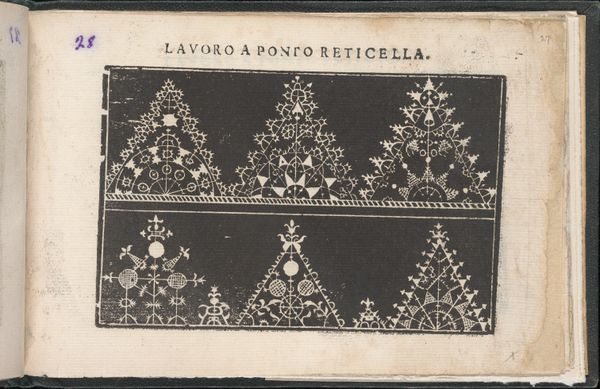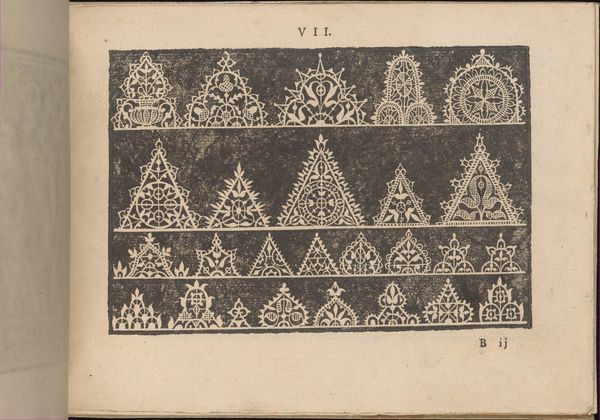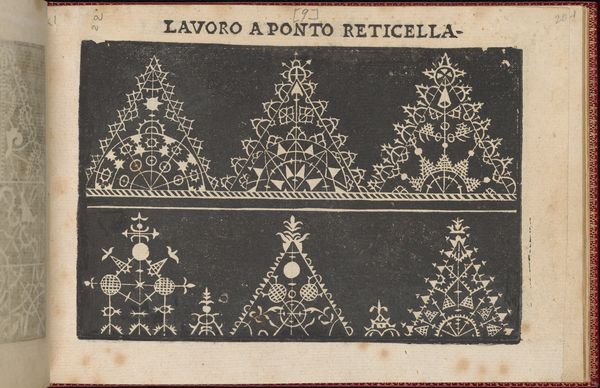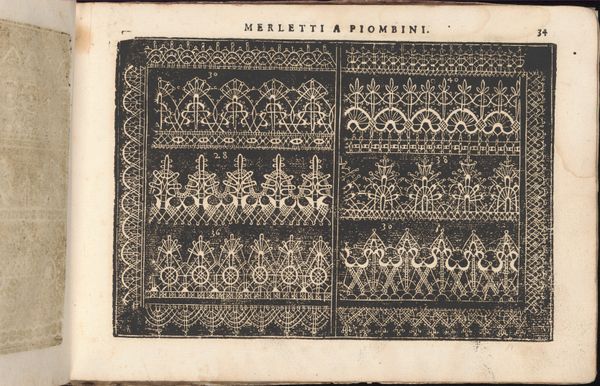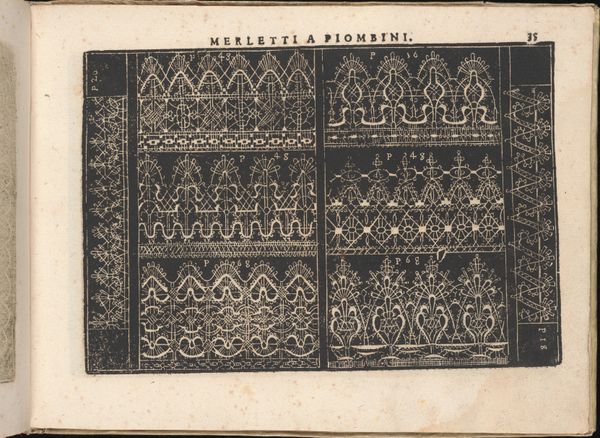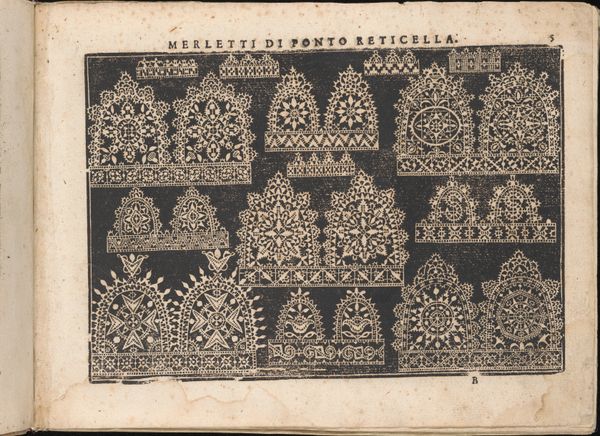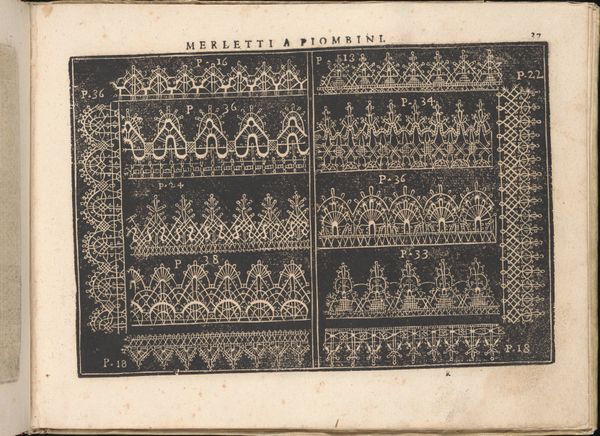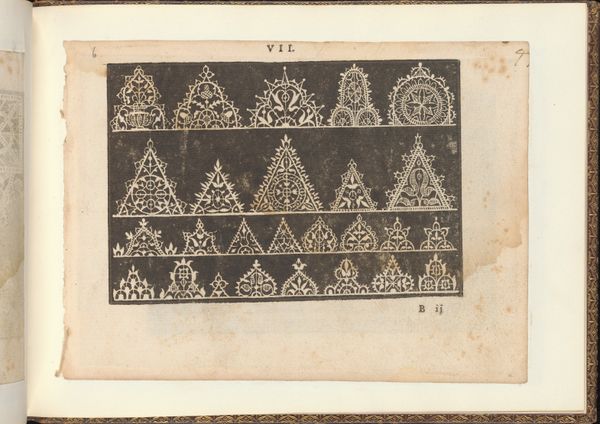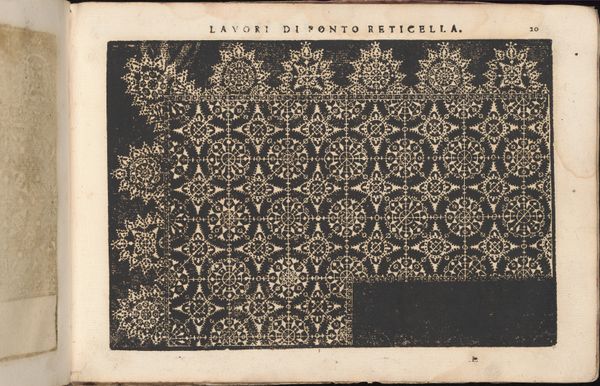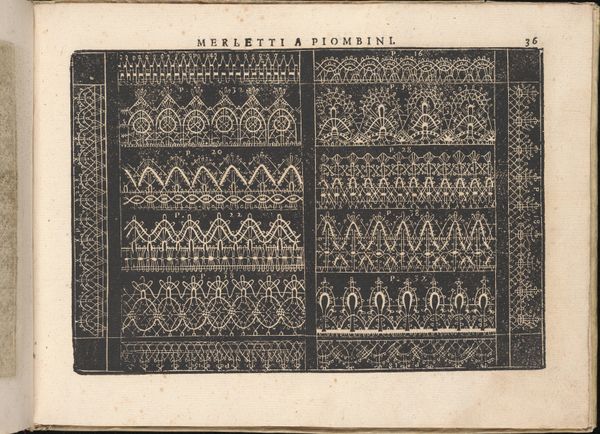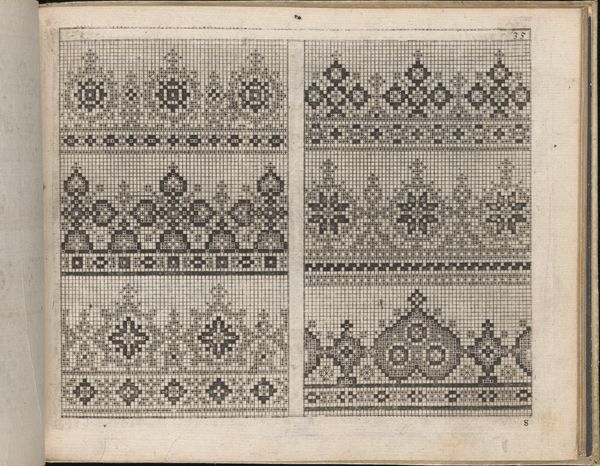
Teatro delle Nobili et Virtuose Donne..., page 8 (recto) 1616
0:00
0:00
drawing, graphic-art, print, textile
#
drawing
#
graphic-art
#
pottery
# print
#
book
#
textile
#
italian-renaissance
#
brown colour palette
Dimensions: Overall: 7 1/2 x 10 7/16 in. (19 x 26.5 cm)
Copyright: Public Domain
Editor: So, here we have "Teatro delle Nobili et Virtuose Donne..." page 8, a print from 1616 by Isabella Catanea Parasole. It’s really striking, almost like a sampler of lace patterns. I am intrigued by its repetitive, almost geometric design. What is your interpretation? Curator: Considering this print within its historical context reveals some fascinating insights. These weren't simply abstract patterns. They were functional designs, demonstrating fashionable lace edging that was in vogue at the time. These were a direct influence of the socio-political atmosphere; lace, especially in patterns this complex, was indicative of status and wealth. These books facilitated a degree of skill for those perhaps unable to employ a lace maker; the political atmosphere is somewhat democratised via the access afforded by books like this one. Does that give you some insight? Editor: Absolutely! So, it's not just a collection of pretty patterns; it’s about communicating status, skills, wealth and possibly more directly to an expanding audience. Was it typical for women to be creating and publishing these types of design books? Curator: Precisely. Parasole's publication highlights a fascinating shift where women were taking control of their roles as contributors to fashion and domestic arts, defying patriarchal constraints. While women artists certainly existed before, printmaking allowed for wider distribution, asserting a sort of agency that’s clearly demonstrated by Isabella’s profile. Editor: I hadn't considered the power dynamics involved! Now, looking at it again, I see how the book acts as a social tool, influencing tastes, spreading skills and arguably contributing to empowerment. Curator: Exactly. These objects speak volumes about the agency of women through making and consuming fashion during the Renaissance.
Comments
No comments
Be the first to comment and join the conversation on the ultimate creative platform.
